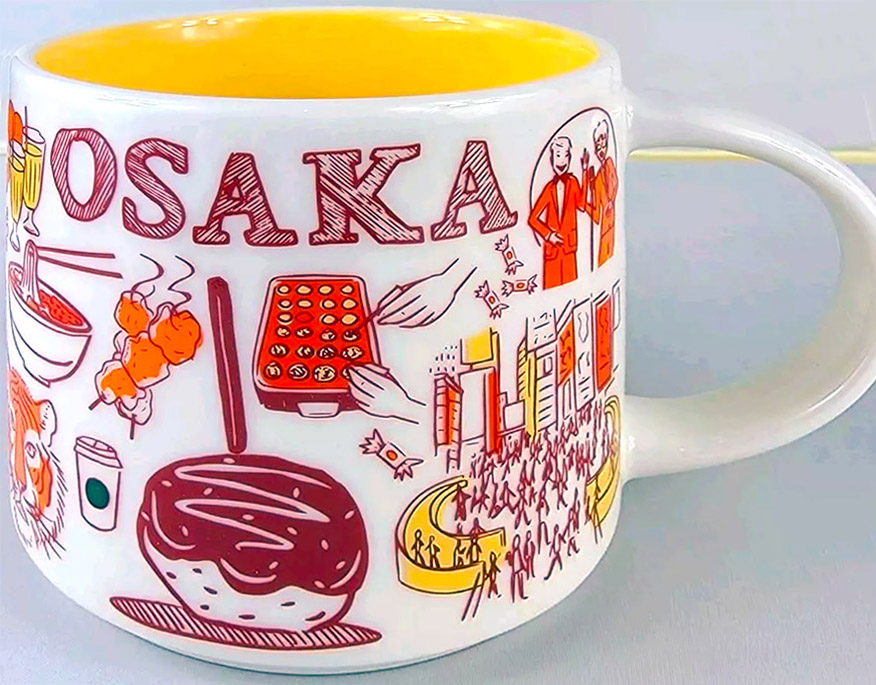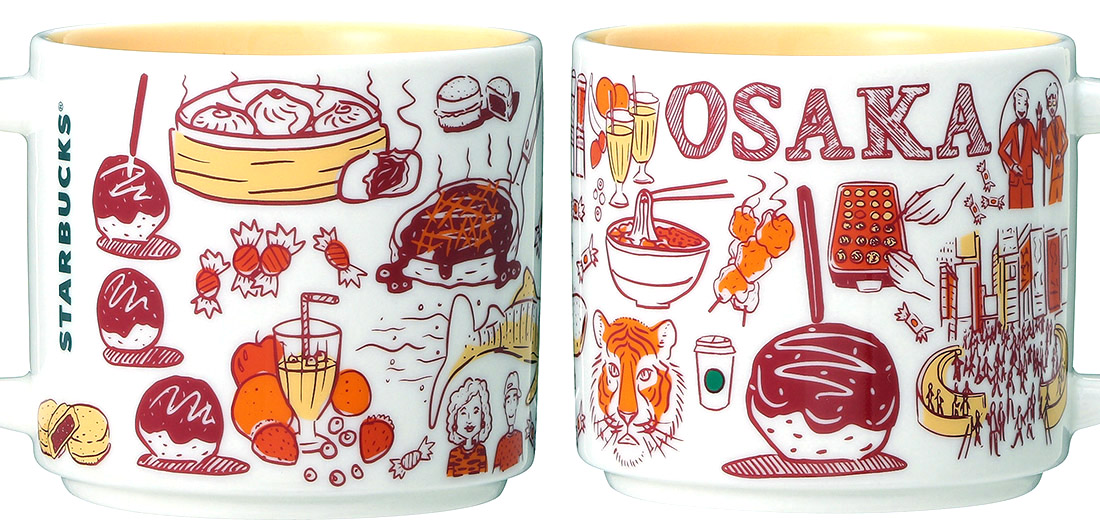
Been There – Osaka
Starbucks Been There – Osaka is a mug for one of Japan’s major cities, that boasts a rich history dating back over 1,500 years. Originally known as Naniwa, it served as a bustling port and the nation’s capital during the 7th and 8th centuries under the reigns of Emperor Kōtoku and Emperor Shōmu. The city played a pivotal role in Japan’s maritime trade, connecting the country with the rest of Asia. During the Azuchi-Momoyama period in the late 16th century, Osaka Castle was constructed under the orders of Toyotomi Hideyoshi, a key figure in Japan’s unification. The castle became a symbol of his power and a critical political center. Throughout the Edo period (1603-1868), Osaka thrived as a commercial hub, earning the nickname “the nation’s kitchen” due to its central role in the rice trade and its bustling marketplaces. The city’s strategic importance and cultural influence have left an indelible mark on Japan’s history, shaping its development through various eras.
As for the mug, it seems that the design focuses on the city’s local culinary specialties:
– One of Osaka’s most iconic street foods is Takoyaki, or octopus balls. These savory snacks are made from a batter of flour, eggs, and dashi, filled with pieces of tender octopus, green onions, and pickled ginger. Cooked in special takoyaki pans, the balls are turned to achieve a crispy outer shell and a gooey interior and are typically served with a drizzle of tangy takoyaki sauce, mayonnaise, and a sprinkle of bonito flakes.
– Often described as a Japanese savory pancake, Okonomiyaki is a beloved dish in Osaka. It consists of a batter mixed with shredded cabbage and a variety of ingredients such as pork, seafood, and cheese. Cooked on a teppan (iron griddle), it is flipped and pressed to create a crispy exterior, then topped with a rich okonomiyaki sauce, mayonnaise, dried seaweed (aonori), and bonito flakes. Each bite offers a delicious combination of textures and flavors.
– Kushikatsu, or deep-fried skewers, is a popular food in Osaka, especially in the Shinsekai area. This dish features a variety of ingredients, such as meat, seafood, and vegetables, skewered, coated in panko breadcrumbs, and deep-fried to golden perfection. Traditionally served with a communal dipping sauce, diners are reminded to dip each skewer only once to maintain hygiene and the sauce’s flavor.
– Kitsune Udon is a traditional noodle dish that is especially popular in Osaka. It features thick, chewy udon noodles served in a light, flavorful broth made from dashi, soy sauce, and mirin. The highlight of this dish is the sweet, marinated aburaage (fried tofu), which is said to be favored by foxes (kitsune in Japanese), adding a delightful contrast of textures and flavors to the comforting bowl of noodles.
– Butaman, Osaka’s take on the Chinese steamed pork bun, is a beloved snack enjoyed by locals and visitors alike. These fluffy buns are filled with a savory mixture of minced pork, onions, and seasonings, and then steamed until the dough is soft and the filling is juicy. Butaman is particularly famous at 551 Horai, a well-known chain in Osaka, where long lines of eager customers attest to its deliciousness.























































































